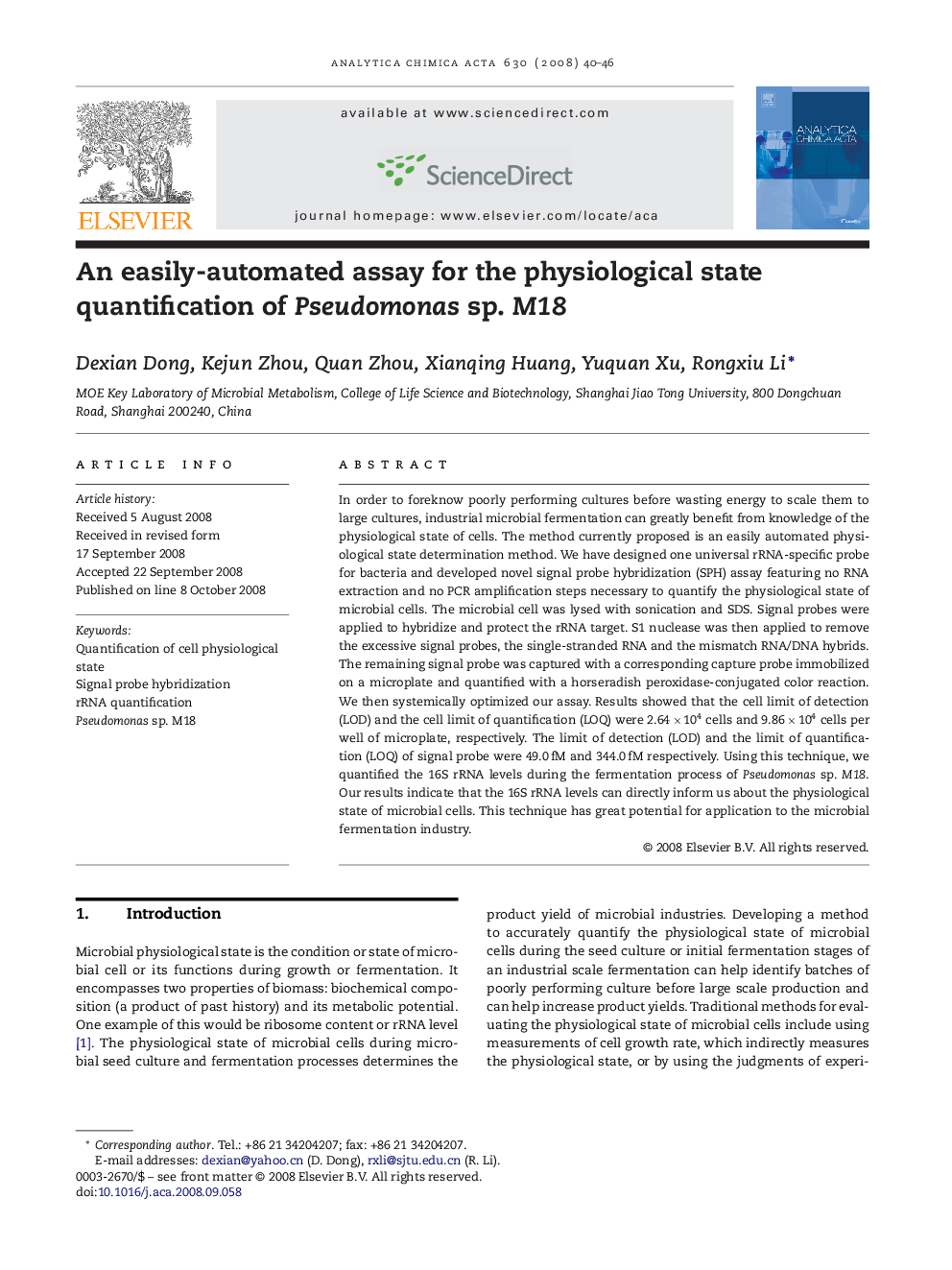| Article ID | Journal | Published Year | Pages | File Type |
|---|---|---|---|---|
| 1169015 | Analytica Chimica Acta | 2008 | 7 Pages |
Abstract
In order to foreknow poorly performing cultures before wasting energy to scale them to large cultures, industrial microbial fermentation can greatly benefit from knowledge of the physiological state of cells. The method currently proposed is an easily automated physiological state determination method. We have designed one universal rRNA-specific probe for bacteria and developed novel signal probe hybridization (SPH) assay featuring no RNA extraction and no PCR amplification steps necessary to quantify the physiological state of microbial cells. The microbial cell was lysed with sonication and SDS. Signal probes were applied to hybridize and protect the rRNA target. S1 nuclease was then applied to remove the excessive signal probes, the single-stranded RNA and the mismatch RNA/DNA hybrids. The remaining signal probe was captured with a corresponding capture probe immobilized on a microplate and quantified with a horseradish peroxidase-conjugated color reaction. We then systemically optimized our assay. Results showed that the cell limit of detection (LOD) and the cell limit of quantification (LOQ) were 2.64Â ÃÂ 104 cells and 9.86Â ÃÂ 104 cells per well of microplate, respectively. The limit of detection (LOD) and the limit of quantification (LOQ) of signal probe were 49.0Â fM and 344.0Â fM respectively. Using this technique, we quantified the 16S rRNA levels during the fermentation process of Pseudomonas sp. M18. Our results indicate that the 16S rRNA levels can directly inform us about the physiological state of microbial cells. This technique has great potential for application to the microbial fermentation industry.
Related Topics
Physical Sciences and Engineering
Chemistry
Analytical Chemistry
Authors
Dexian Dong, Kejun Zhou, Quan Zhou, Xianqing Huang, Yuquan Xu, Rongxiu Li,
